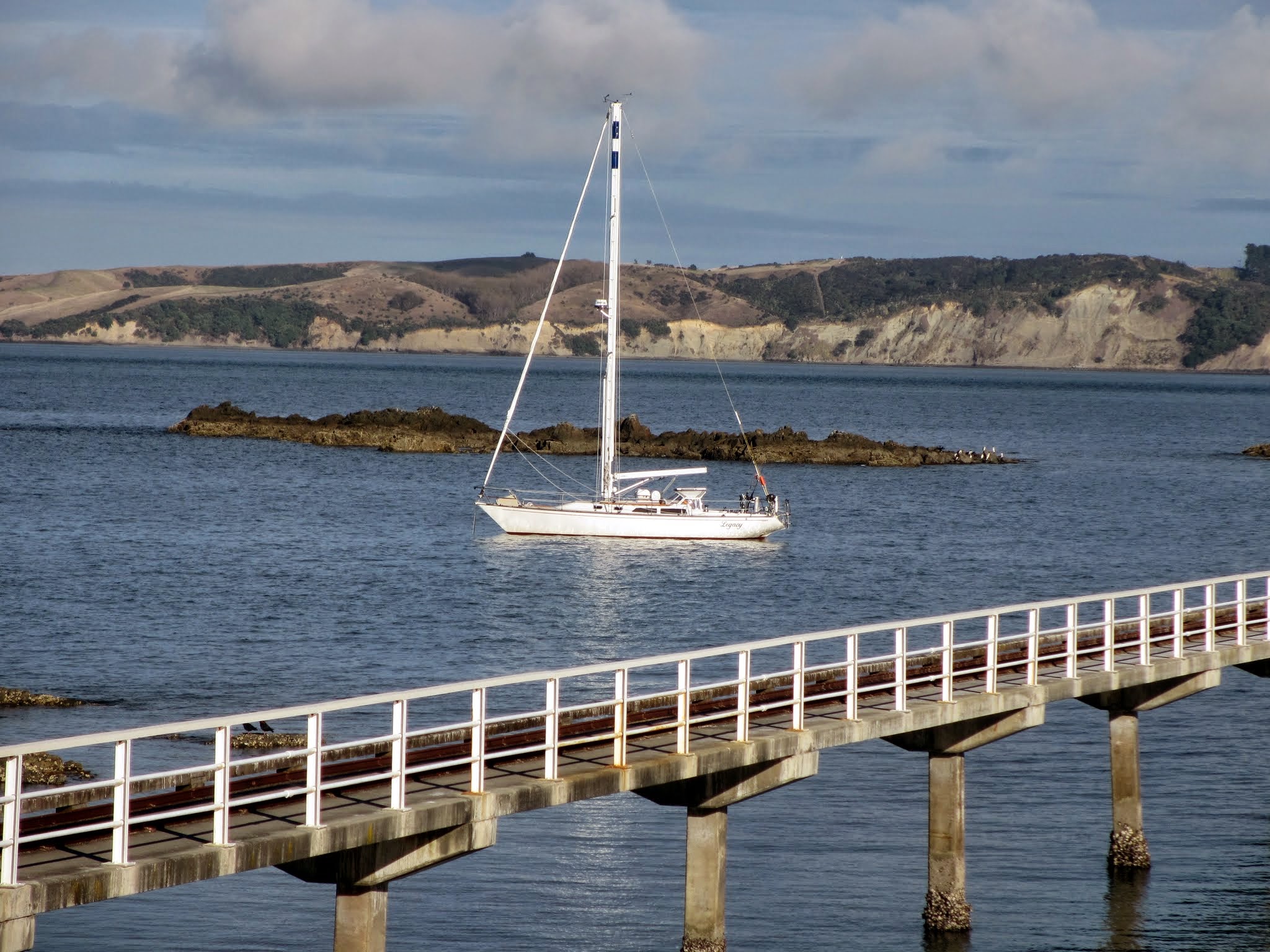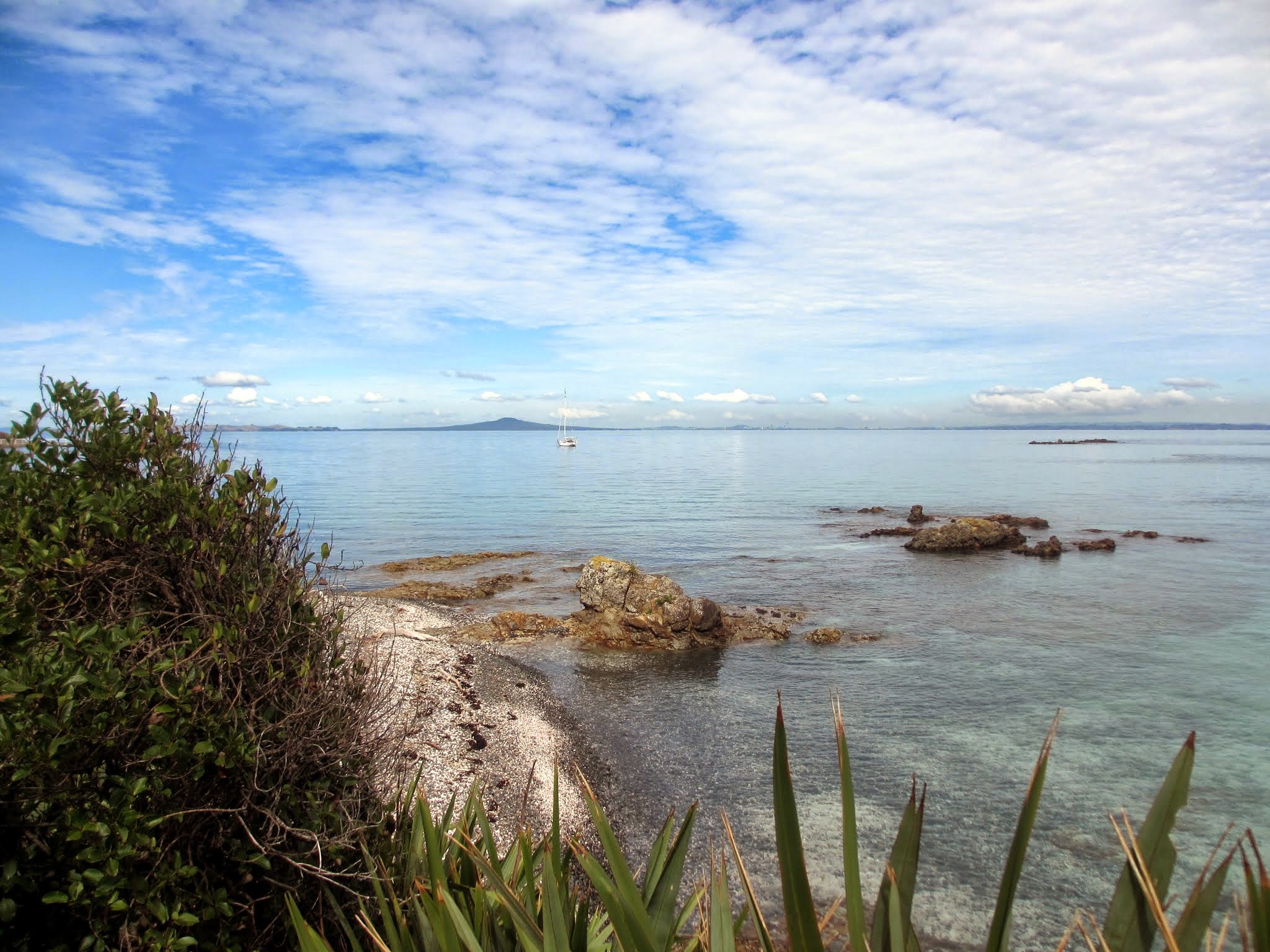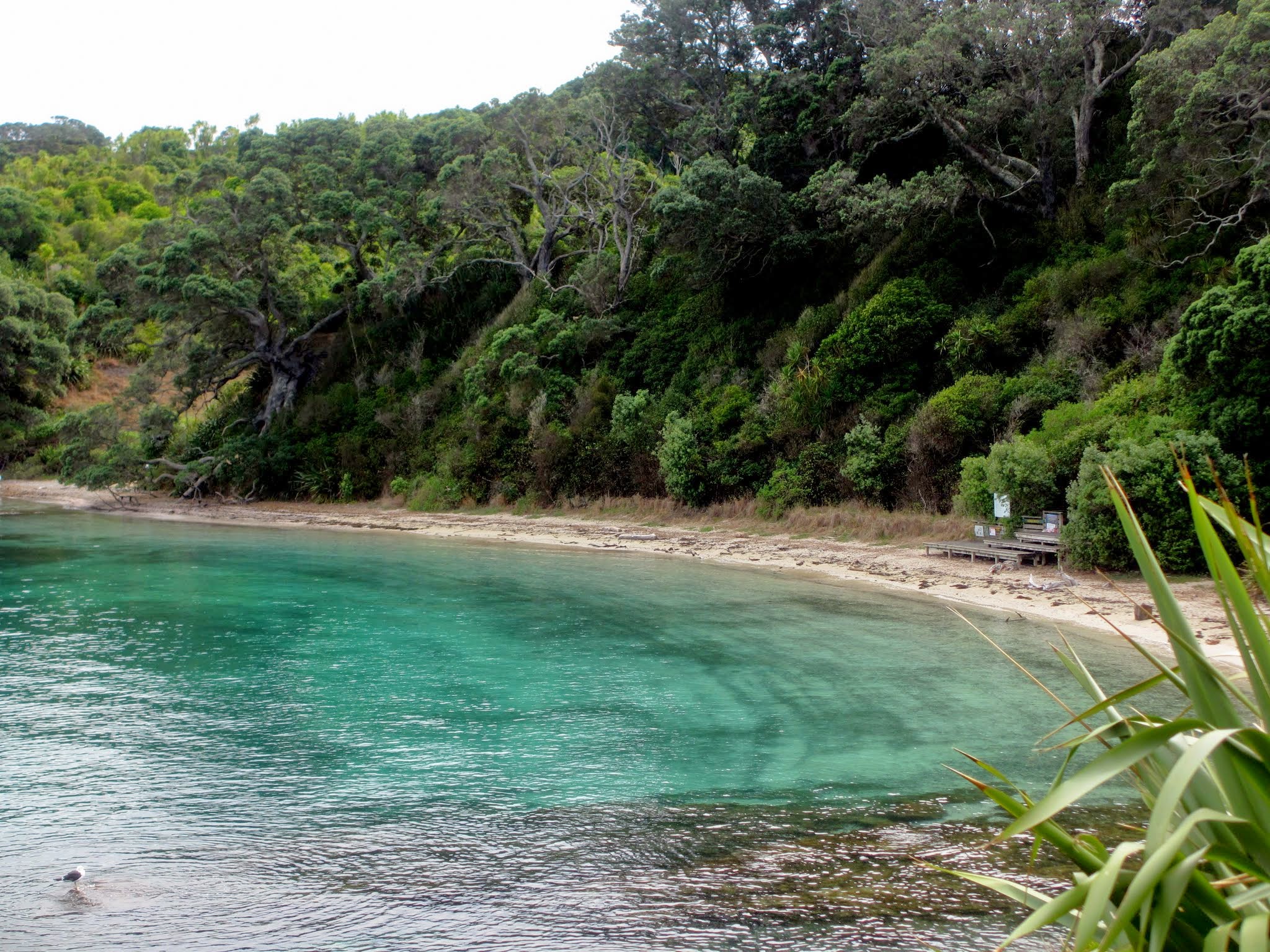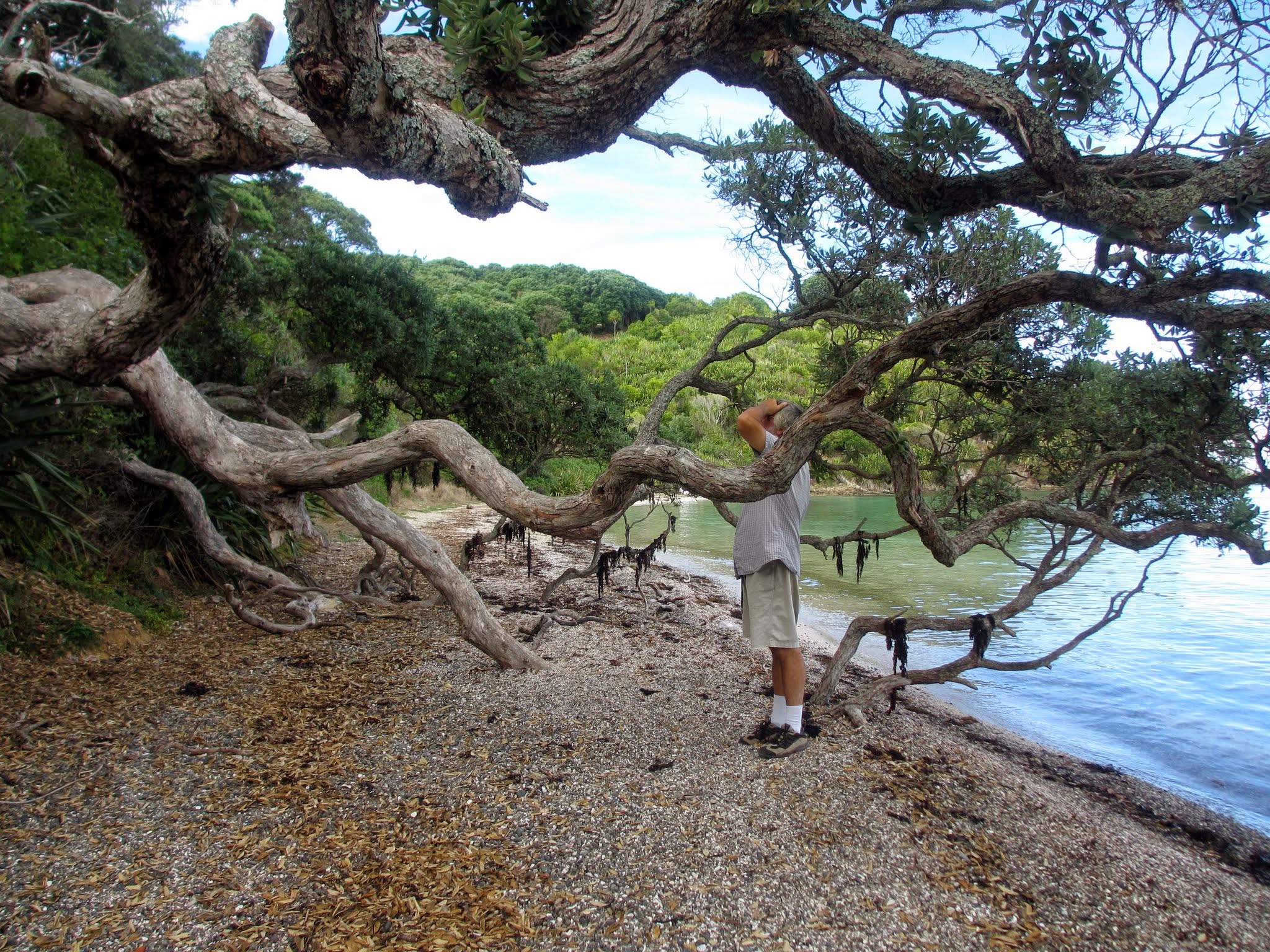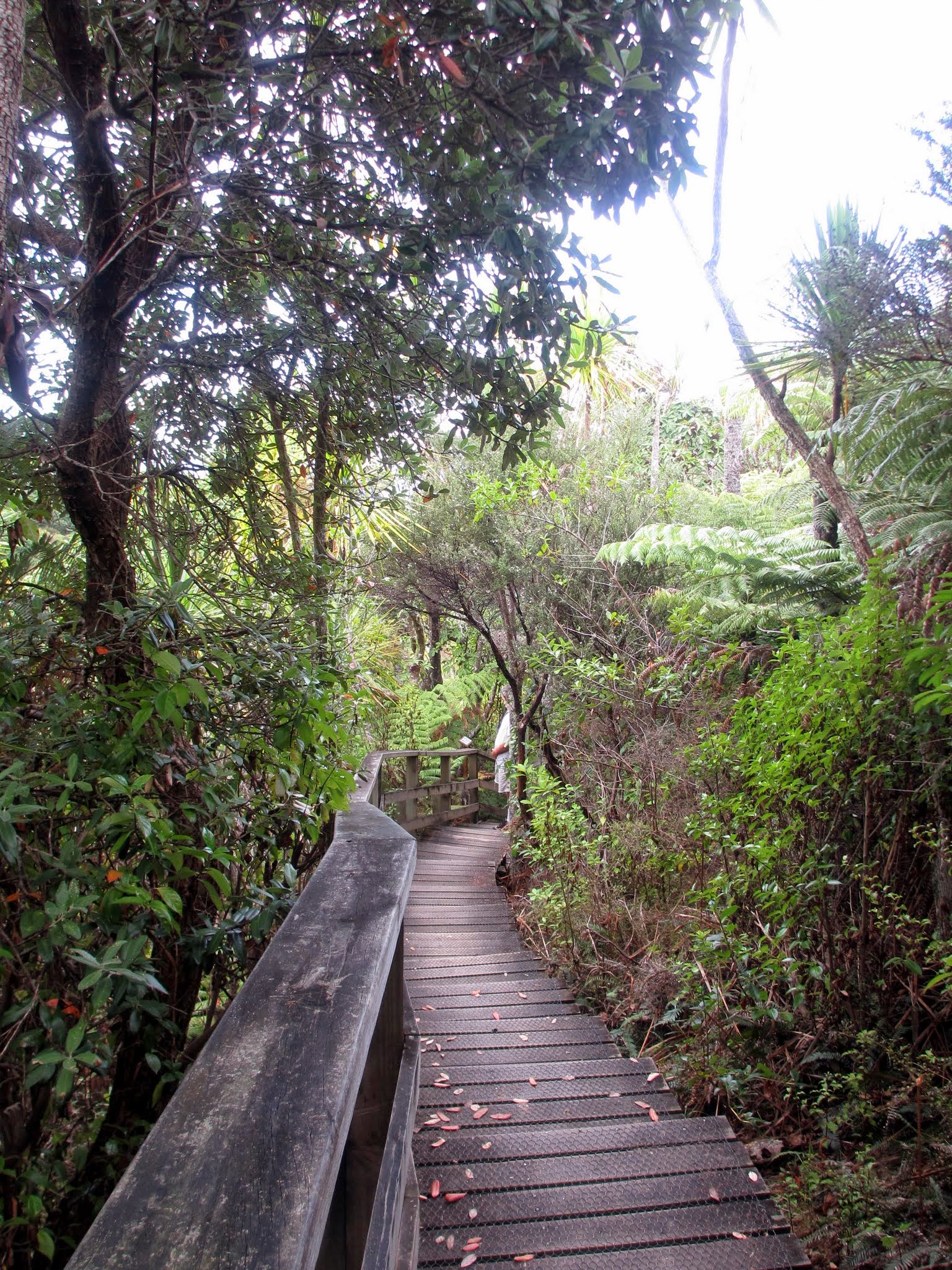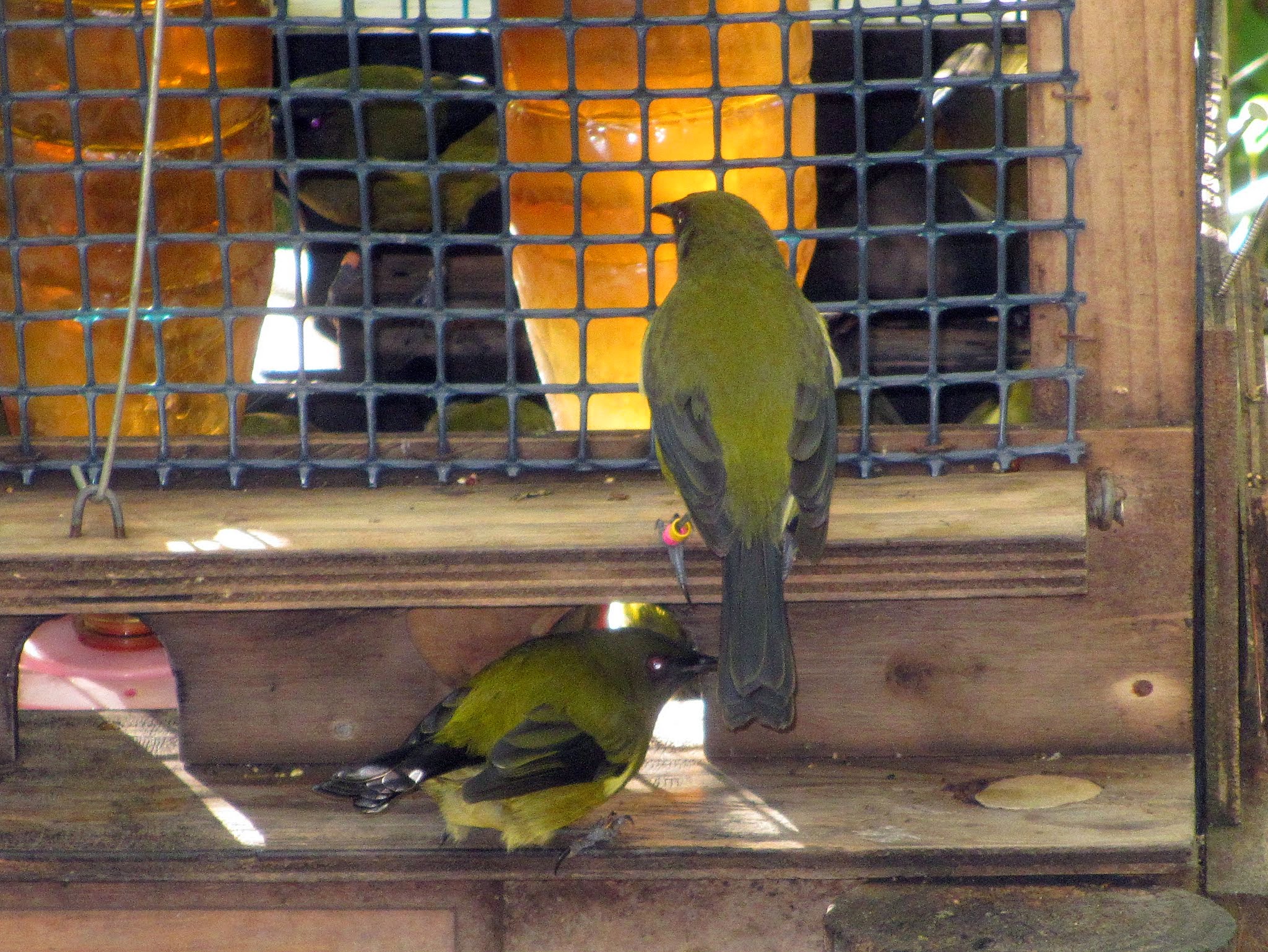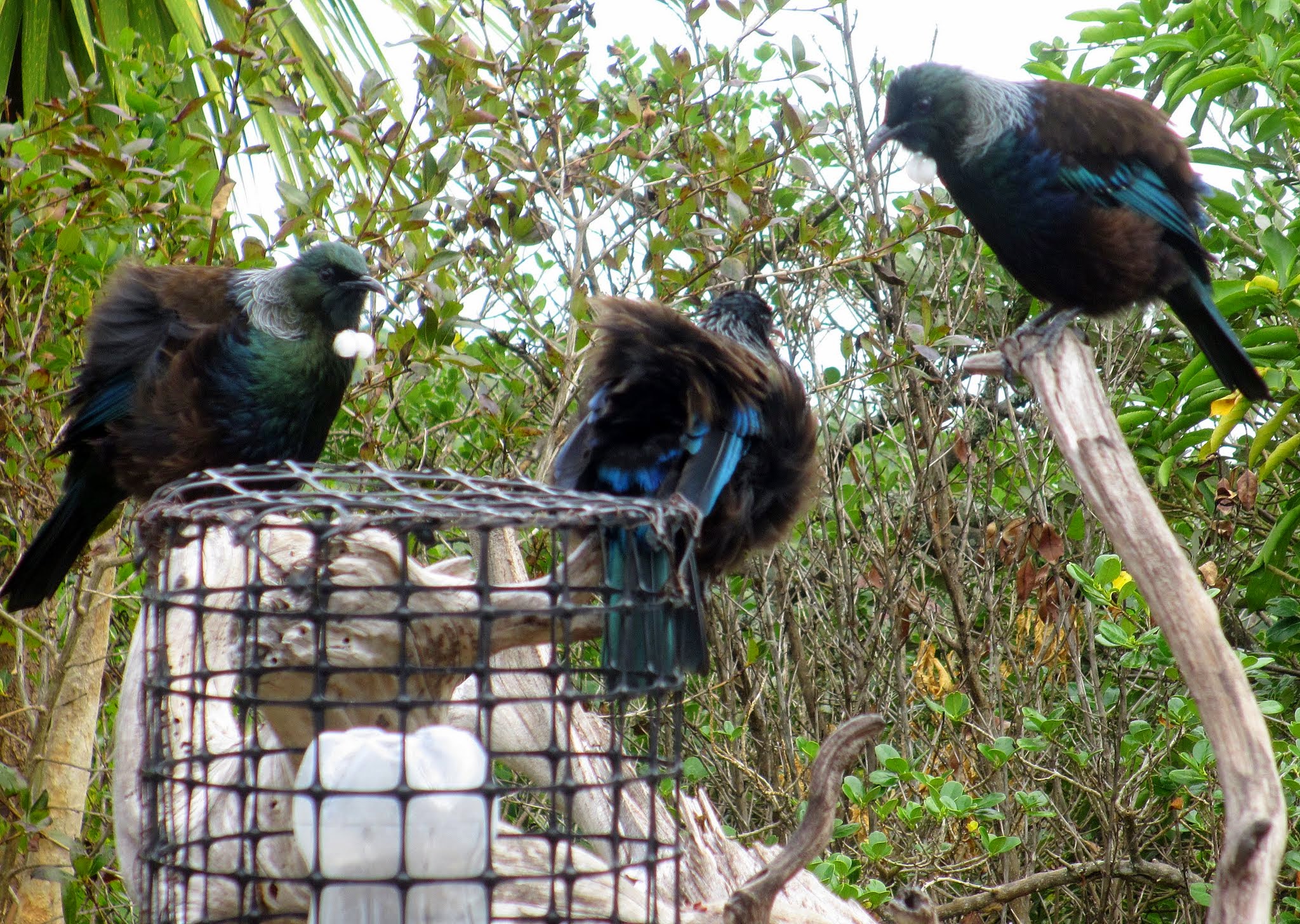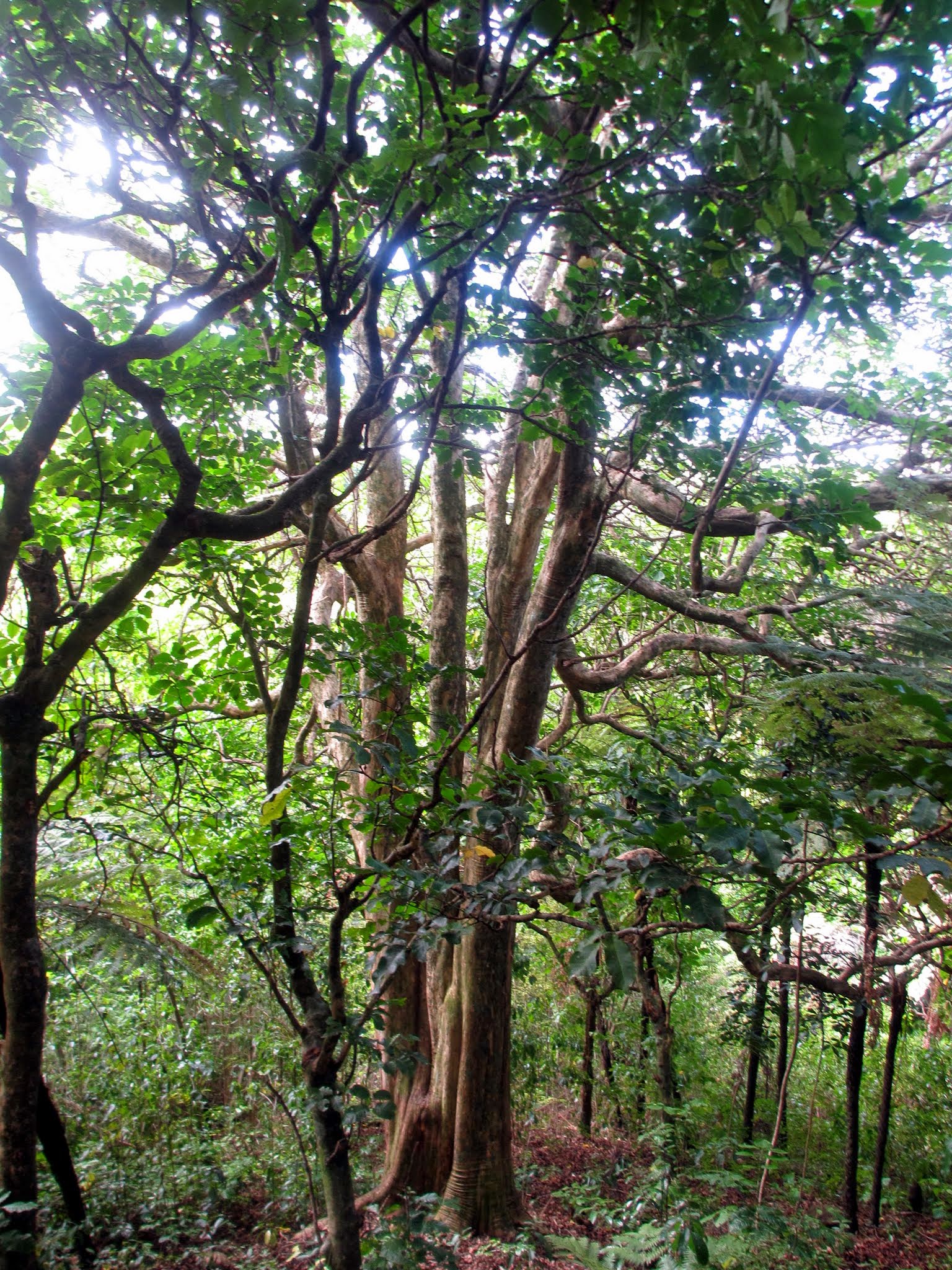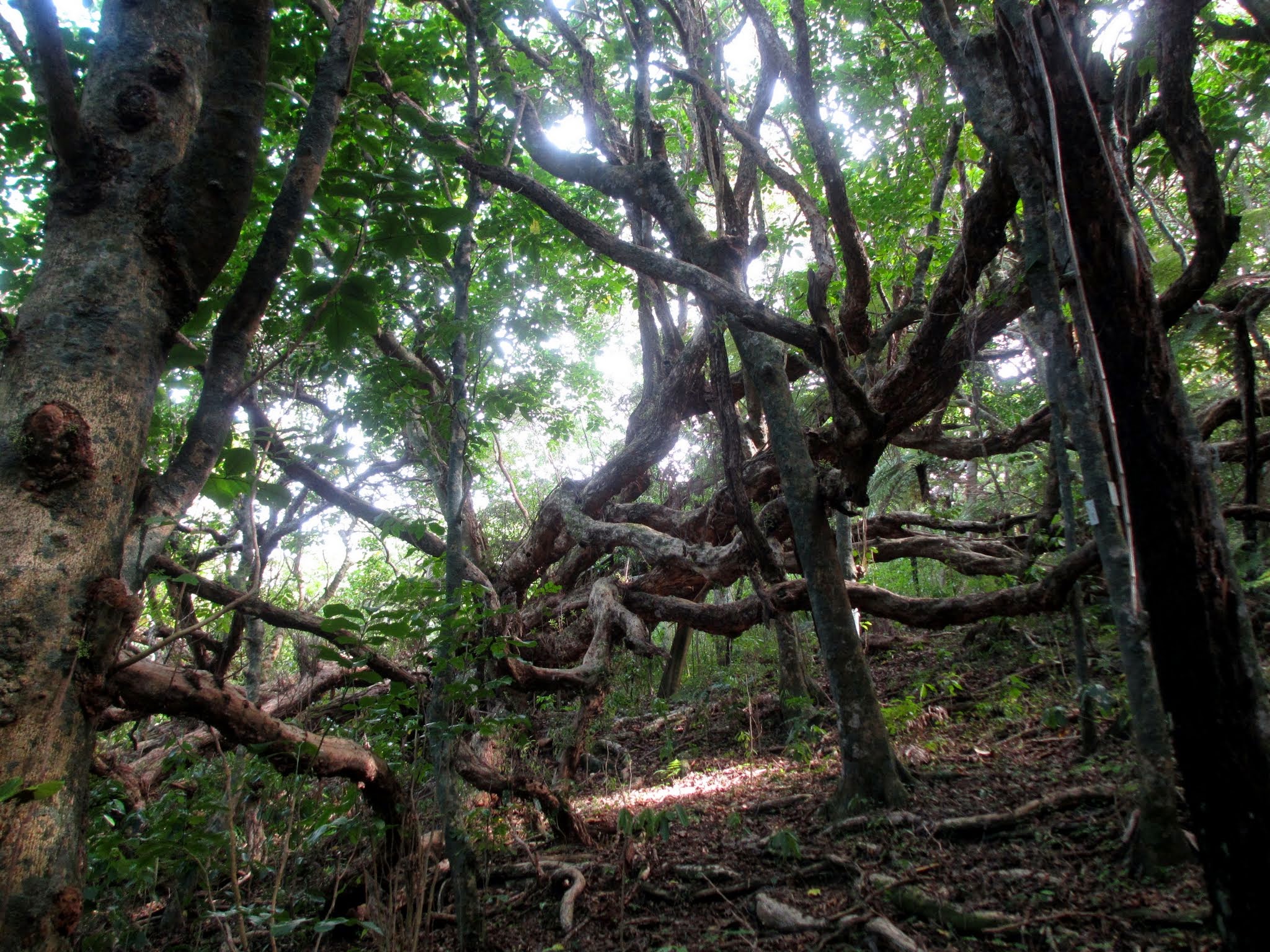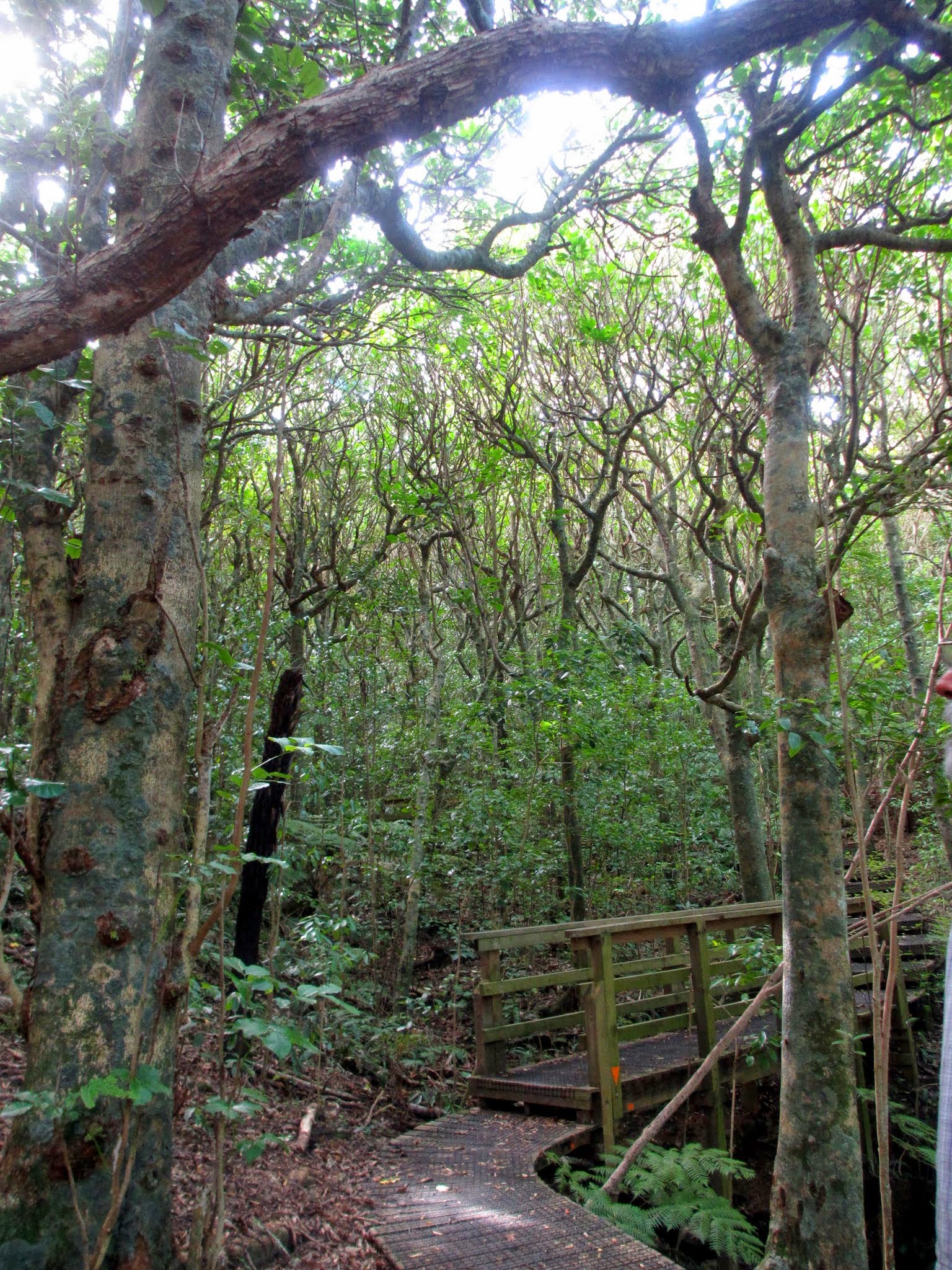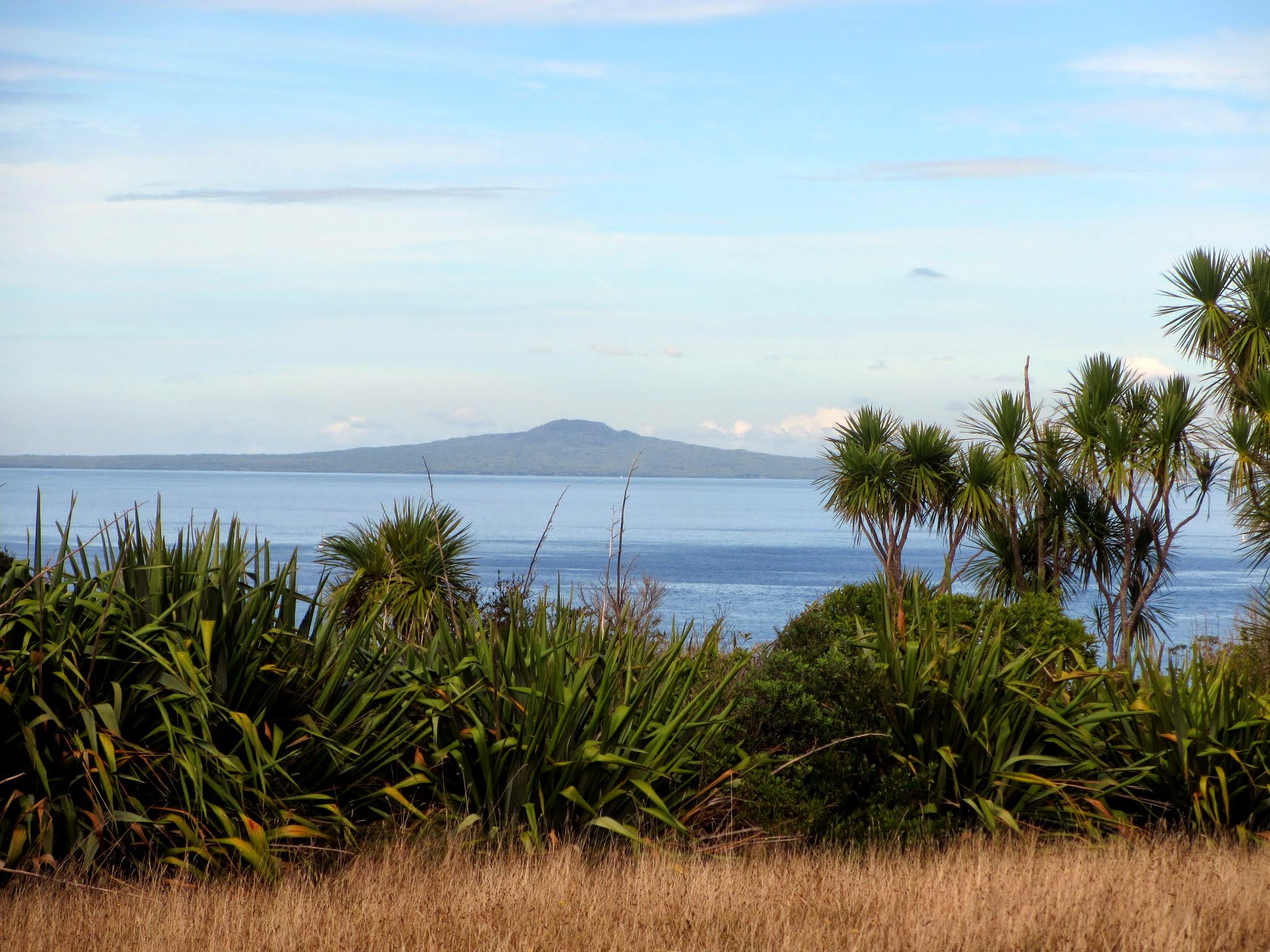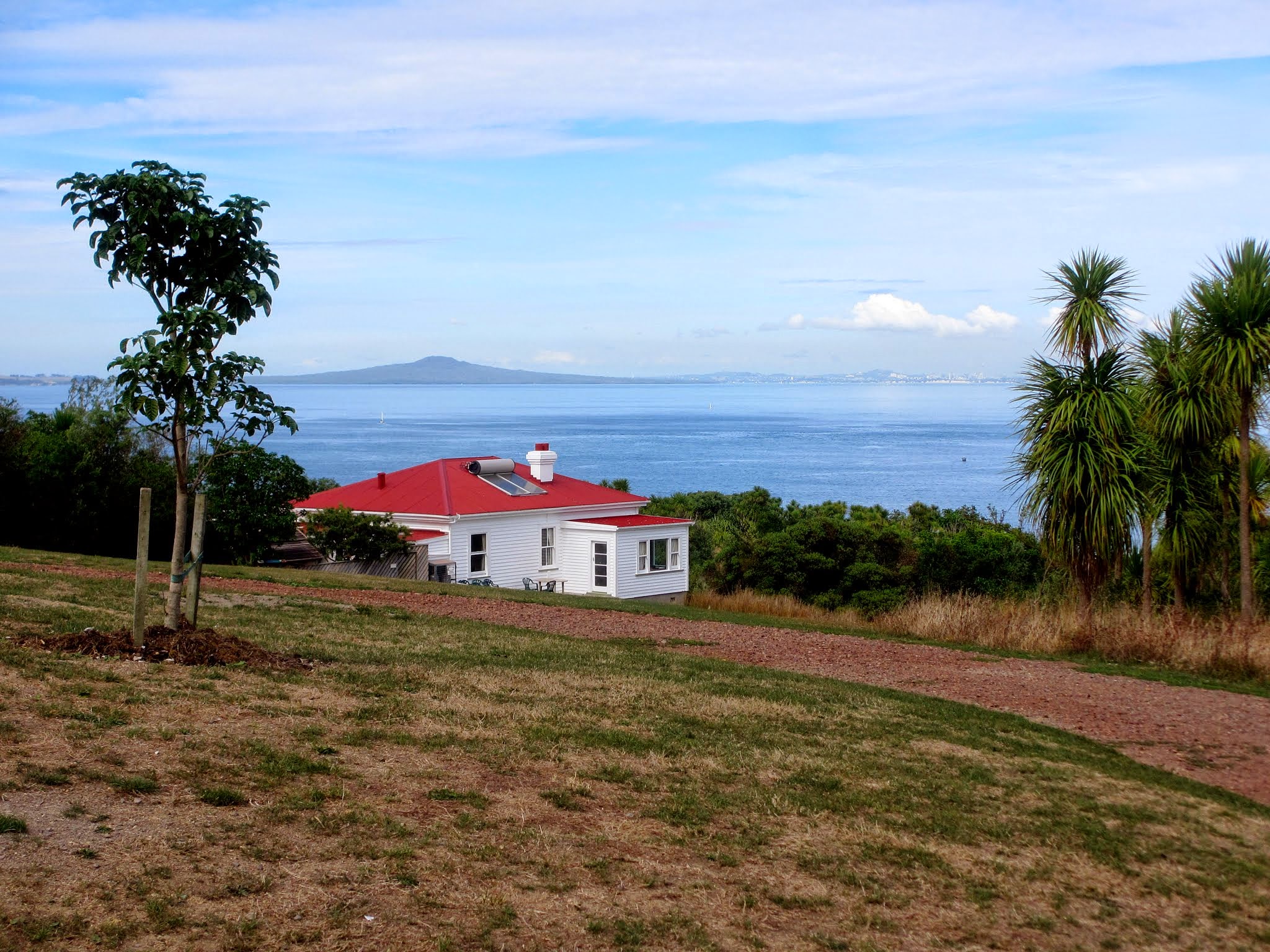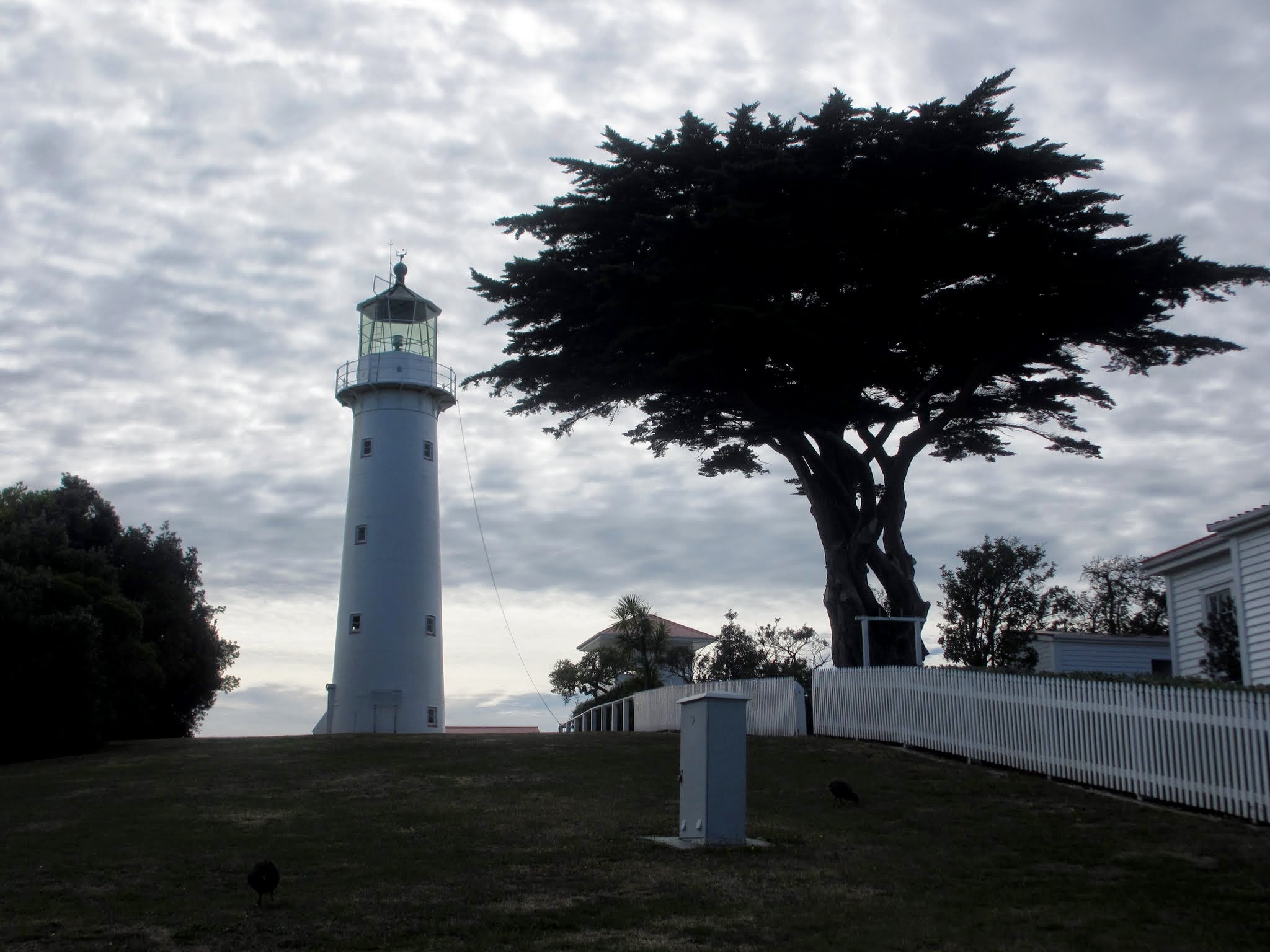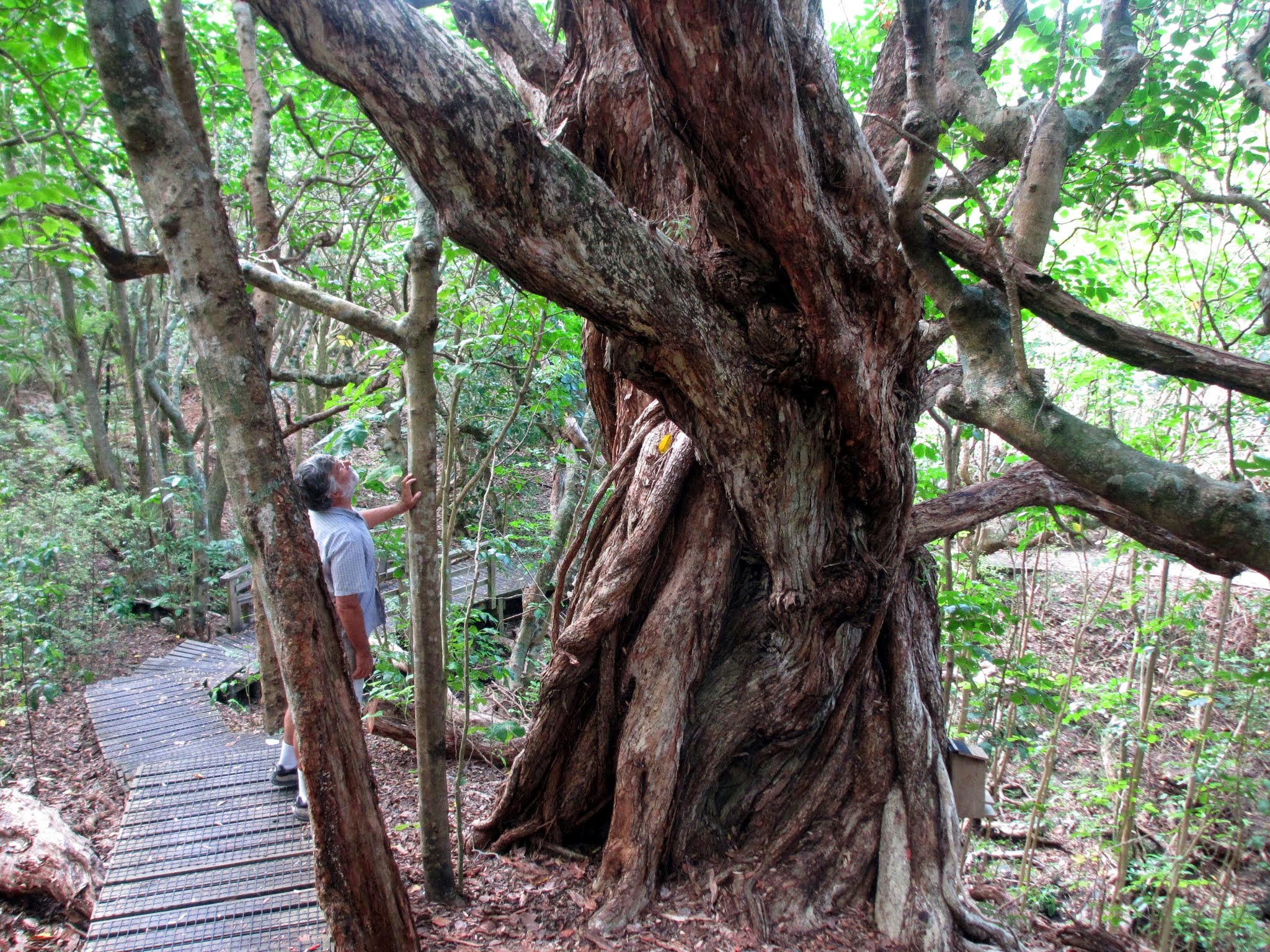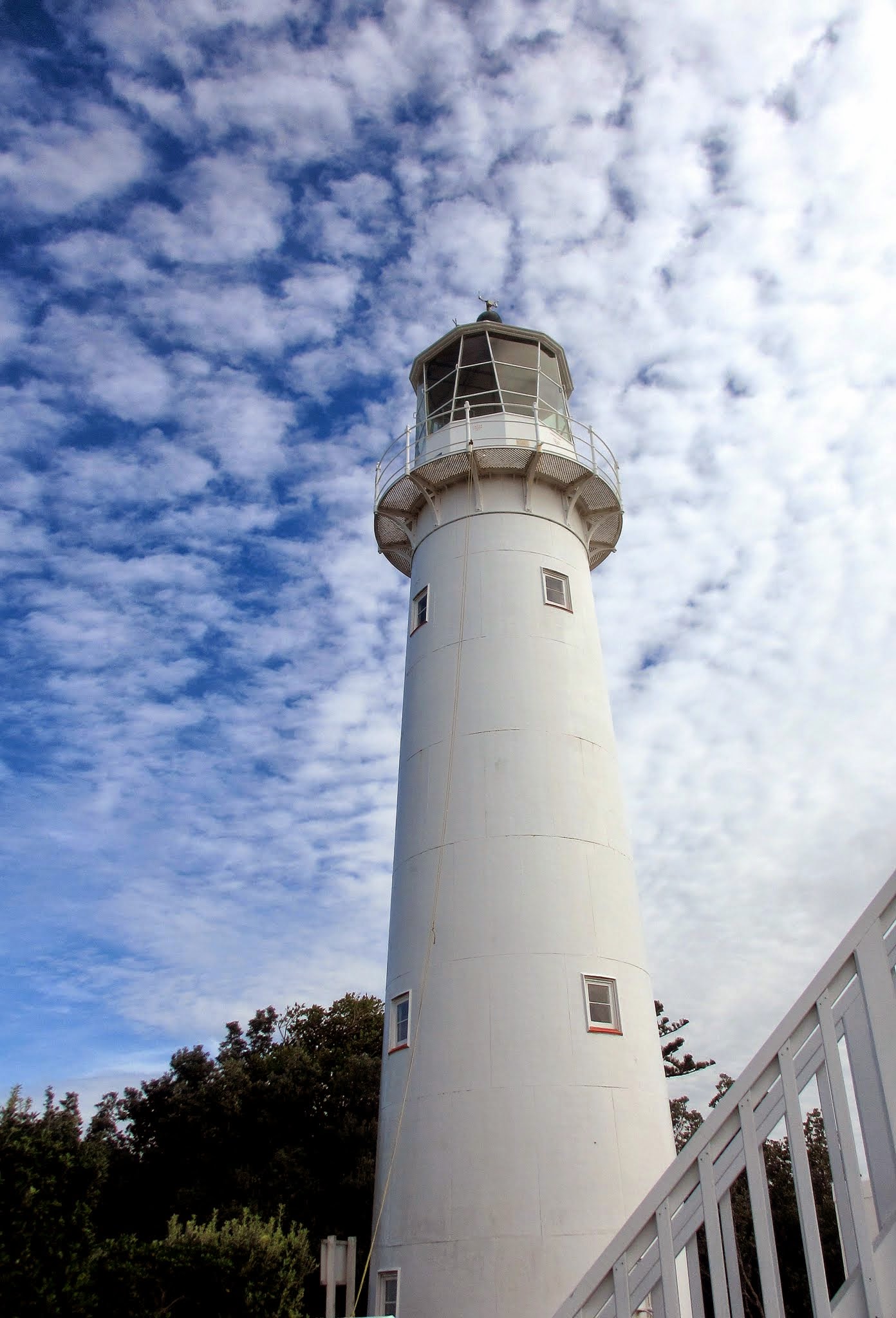April 2, 2013
After bypassing the Motuketekete Island Group, we headed on to an island called Tiritiri Matangi. (Click to enlarge/scroll through photos above.)
Tiritiri Matangi lies on the border between the north and south Hauraki Gulf, right off the tip of the Whangaparaoa Peninsula. The anchorage is small, not well protected, and it won’t win any beauty awards. But the island itself is one of New Zealand’s most magical places (well, if you like birds as much as we do).
Tiritiri Matangi was once devoted to farmland but now is lush with native trees and serves as a sanctuary for New Zealand’s most endangered birds. The island is pest free, and feeding stations are provided for many of the birds. As a result, the birds thrive, and their singing can be heard offshore, earning it the nickname of “the singing island.”
Luckily this is an open sanctuary, and people are free to visit (by private yacht or ferries from the mainland). There are trails through the forest that go by some of the feeding stations, guaranteeing a good look at many of the birds. What makes it even more magical is how relaxed and unafraid the birds are around people. They’ve been bred and cared for by humans, and they have no predators here.
When I was a little girl I loved to study my bird flashcards, which included some birds that had gone extinct. I felt sad that I would never see a dodo bird, passenger pigeon, Carolina parakeet, or great auk. I was only a little kid, but I still remember having a wonderful dream where all these birds showed up in our backyard and being bitterly disappointed to wake up and find it hadn’t really happened. In New Zealand I’ve had a similar experience: I studied my bird guide, but some of the birds are so close to extinction that I couldn’t hope to spot them. Then we came to Tiritiri, and it was like my dream came to life! Birds I never thought I’d see were abundant here, in some cases brought back from near-extinction.
I was thrilled to see several species of rare birds here and excited for their future as other islands and even areas on the mainland are being cleared of predators so these birds can return. Some of the birds here are very rare, but it is a sanctuary for all birds and we enjoyed seeing the common tui enjoying its own feeding station. There are even special boxes on the beach for the area’s little blue penguins, and Tiritiri is now being used to regenerate New Zealand’s own lizard, the tuatara, which has been extinct on the mainland until very recently. It’s all pretty exciting stuff for bird and lizard lovers.
Even without the bird sanctuary this island would be worth a visit. There’s an old lighthouse, one of the first in New Zealand, and some terrific views of the south Hauraki Gulf islands. The regenerated forest is beautiful, but there’s some original forest left with ancient collapsed pohutukawa trees. When these trees get very old, the branches become so large they collapse under their own weight and root to the ground. Other trees then grow amid them into the light, and it’s a pretty incredible sight. Hobbs Beach is also very scenic, with clear green water and a light sand beach. It was all well worth the rolly night we spent here.
Above is a gallery of pictures. The beach in the bottom row of photos is Hobb’s Beach, and next to it is a photo showing part of a collapsed pohutukawa tree (these things are too huge to fit in a single picture). The last photo shows Legacy at anchor and behind her is the Whangaparoa Peninsula across the channel. (As always, click to enlarge and scroll).
Below is a video of bellbirds at one of the feeding stations. Bellbirds are very rare on the mainland but can be found on offshore islands of New Zealand. Their chorus at these feeding stations is pretty impressive–Cyndi


